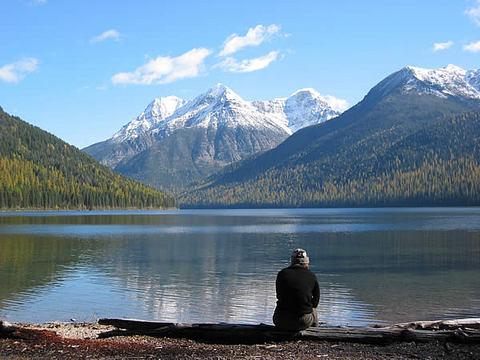Glacier National Park officials have received approval to move forward with a plan to remove non-native lake trout from Quartz Lake. Now the hard work begins, as ridding a lake of fish is no easy task if you want to preserve the native species.
Until recently, Quartz Lake, located in the park's northwestern corner, was the largest natural lake supporting bull trout in the Columbia River Basin that had not been compromised by nonnative fish species. Despite efforts to protect Quartz Lake from invading lake trout, (by constructing a fish barrier in 2004), lake trout were discovered in the lake in 2005.
Fisheries experts from both the park and the U.S. Geological Survey will now move ahead to evaluate and determine the status of lake trout in Quartz Lake, identify primary spawning areas through the use of radio-telemetry, and then remove as many lake trout as possible during targeted netting efforts. A motorized boat and gill-netting operation will be the primary methods used to conduct this study.
"While this project will take place on Quartz Lake, it has the potential to protect the native fishery of the entire upper Quartz Lake system which includes Middle Quartz, Quartz and Cerulean lakes," said Park Superintendent Chas Cartwright.
The upper Quartz Lake system is located within recommended wilderness in the North Fork of the Flathead River watershed. Native fish species in this complex include bull trout, classified under the Endangered Species Act as "Threatened," westslope cutthroat trout, a Montana state species of special concern, mountain whitefish, and others.
Concerns were raised by some commenters regarding potential negative impacts to recommended wilderness from an action that they deem has a limited likelihood of success. However, National Park Service biologists have consulted with outside fisheries biologists and other fisheries professionals and NPS managers believe that a four-year experimental lake trout control project is a reasonable and responsible way to proceed.
"If native fish populations can be conserved in Quartz Lake, then potential temporary negative impacts to recommended wilderness are considered acceptable (not significant) and can be mitigated," said Superintendent Cartwright. "The project area comprises a very small portion of Glacier’s recommended wilderness."
Proposed improvements to the existing fish barrier, described in the EA, have been removed from the project due to public concerns and the need for additional information and analysis. It may be analyzed at a later time if determined to be necessary. The potential boat house described in the environmental assessment was also eliminated from the proposal. Mitigation to reduce and prevent adverse impacts to nesting common loons and bald eagles has been added.
The work will begin late this month. This project will be funded by the National Park Service, the U.S. Geological Survey, and the Glacier National Park Fund, Glacier’s official fund-raising partner.




Add comment